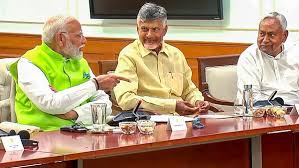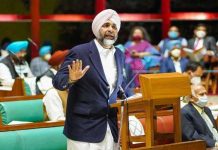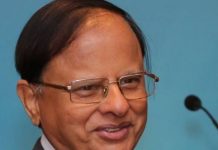Apart from coalition compulsions, the country’s changing demography, with the youth, who make up a critical portion of the voting population, turning vociferous in matters relating to education and employment, has made the Modi government to tread cautiously post-2024. By Dr. Anil Singh

While it is anybody’s guess whether the indecisiveness of the NDA government under Prime Minister Narendra Modi over pending legislative and policy initiatives —the Wakf Board Bill, Broadcasting Amendment Bill, or even the Lateral Entry Advertisement that was withdrawn — has been due to several factors. Unlike the decisive majorities that came about in the 2014 and 2019 Lok Sabha elections, the 2024 elections threw up a more fractured verdict. Although the BJP still holds the largest party position, it did not win an absolute majority and had to, therefore, count on coalition partners for forming the government. On their part, the imperatives of needing coalitions have already compelled it to be more accommodative — in other words, to bargain and compromise more — which, in turn, has made it much more careful in its approach to policy-making. The aftermath of the 2024 elections has generally been that of increased complexity, with an emboldened opposition and an ever-strident civil society.
This has spawned an environment wherein the government is increasingly under attack for its policies and faces more opposition to them. Contributing to the government’s circumspection have been the imperatives of coalition unity and not alienating any significant allies. The current economic difficulties faced by the country — inflation, unemployment and slow economic growth — have further heightened the political cost of the government implementing any meaningful reforms.
Coalition compulsions
For instance, the U-turn on the Wakf Board Bill can be explained by the general uproar and strong opposition coming in from different community groups and political parties who argue that the bill was geared toward undermining the autonomy of Wakf properties. The withdrawal of the Broadcasting Amendment Bill was similarly influenced by concerns of media organizations and freedom-of-speech advocates that the bill would result in government control over the media. The move to withdraw the Lateral Entry Advertisement, which was in its attempt to attract professionals from the private sector for government roles, was precisely criticized for largely circumventing the normal civil service recruitment process and giving the impression that this act is something close to favouritism without any transparency.
The other principal factor that has contributed to indecisiveness in the Modi government since 2024 is the geopolitical scene. Rising tensions with neighbours and increasing complexity required in management, quite naturally, have called for greater caution. Domestic policy initiatives had to be balanced against the requirements of foreign policy, leading quite often to delays and even reversals in decision-making. The internal dynamics of the BJP and the larger NDA coalition have also contributed. There are reports that differences among key leaders and coalition partners on opinions and priorities caused problems in reaching consensus over some issues. Such internal conflict has made the need for greater caution and consultation in governance imperative for the sake of unity and avoiding internal conflicts.
Another pressure on the government has been the increased public expectations and raised political consciousness. What is now witnessed is a more informed electorate ready to articulate their demands and concerns and scrutinize the actions of the government even more. This has put pressure on the government to be more responsive and adaptable, leading at times to reversals or delays in policies. The other issue, which cannot be under emphasised, pertains to the impact of social media and digital platforms. The faster flow of information and the quick mobilization of citizens in cyberspace have made for a much more dynamic and unpredictable political environment. It is in this kind of landscape that the government has been trying not to tread too gingerly, balancing decisiveness with the risk of public backlash.
The Modi government’s reform agenda was hampered by the bureaucratic red tape and the passive resistance from within the administrative machinery. Second, the federal structure of India —wherein significant powers are vested with state governments — muddled the implementation of central policies further. All this has resulted in lengthy negotiations and consensus-building leading to delays and several compromises.
Moreover, the government has to contend with judicial interventions and legal challenges against its policies. With the proactive role of the judiciary in reviewing and at times annulling decisions of the government, this further added a layer of burden onto the already complex policy-making process. This judicial review has been responsible for making one adopt a careful approach so that policies may survive legal scrutiny.
Public stirred
The government decisions have not been immune to public protests and movements. The farmers’ protests against the three reform laws in agriculture are an example of the strength organized groups in civil society can wield to question government policies. Seeing that the protests remained without any halt, the government was at last put to the wall and compelled to withdraw the controversial laws. Thus, public disapproval proved to be a great potential for ‘policy reversal’.
Of course, it was a reason for the cautious approach of the Modi government after 2024, as the political scene in India is witnessing rapid change. The emergence of regional parties at the centre and their strengthened role in national politics made coalition management increasingly complicated. Quite often, these regional parties represent very local interests and demands, which the central government needs to absorb to maintain a stable coalition. Therefore, policy was more of a negotiated type of making, rather than driven by a unilateral approach.
The second important factor that instigated the Modi government to tread cautiously post-2024 is changing demography. With the youth making up a critical portion of the voting population, they have turned vociferous and demanding in matters relating to opportunities in education and employment, with the need for social justice. This primed change in demography has called for policies intending to meet aspirations and concerns more equitably and inclusively.
It is a basic need in this regard that very careful planning and coordination with the concerned parties is done for the achievement of the number of goals of the government, be it the development of infrastructure through the construction of highways, railways, and other projects connected with urban development. Implementation of such gigantic projects is usually marred by problems of land acquisition and environmental clearances, among other logistic problems, which make them delayed. This is the caution added to by the necessity to provide all efficiency and sustainability in the manner they are executed. At least partly, the Modi government had to be sensitive toward the subtleties of India’s many-faced cultural and religious identity. No step is taken to introduce policies or any other measures that may rock the social boat at this juncture through their possible effect on certain communities, thereby disturbing social harmony. This has caused a more consultative approach to be taken through dialogue with community leaders and stakeholders for the sake of consensus.
The government policies have also been impinged on by an impetus toward bettering India’s standing within the comity of nations and attracting foreign investment. A measure of this nature was needed to ensure that there indeed existed a stable and predictable policy environment for retaining investor confidence. It has also meant the Government of India walking on a tightrope between bold reforms and giving a stable and supportive environment to business and investment.
Some of the main causes of the indecisiveness and over-cautious attitude of the Modi government since 2024 thus relate to coalition dynamics, opposition strength, economic challenges, geopolitical considerations, internal party dynamics, public expectations, the role of social media, the COVID-19 pandemic, bureaucratic resistance, judicial interventions, public protests, regional parties, social welfare and inclusive development, digital governance and technological advancement, environment and sustainability, demographic shifts, infrastructure development challenges, cultural-religious diversity, foreign investment, and healthcare and public health. These have combined to give a more measured and consultative approach to governance compared to an assertive one in the earlier terms.
The reasons as to why the Modi government has had no initiative-activeness about bold measures post-2024 are attributed to coalition management, enhanced opposition strength, economic troubles, and the need to respond to people’s pressure and opposition political pressures. It has resulted in a far greater degree of timorousness and dithering, especially when compared to policymaking taken with force after the elections in 2014 and 2019.
The way forward
The very fragility of the Modi-led NDA government calls for the Prime Minister to work in an ambience of consensus and transparency, which enables the smooth functioning of the government. Because of the reliance on allies in a coalition, it is important to genuinely pursue them with credible and unambiguous communication. Appropriate consultations and convincing answers to the concerns of coalition partners can enhance trust relationships and consociational follow-up. It is also for PM Modi to be positively engaged with the opposition parties, which are going to help end this gridlock in the legislature.
Positive initiations of dialogues along with seeking out bipartisanship support for the major policies will provide a more positive political environment. It follows that economic stability has been expected of the Modi government, along with public communication, institutional frameworks, social harmony, health and education, with a particular focus on women and senior citizens, to leave no neglected areas out of consideration, technology for better governance, and environmental concerns on a priority basis and balanced with encouraging public participation.













